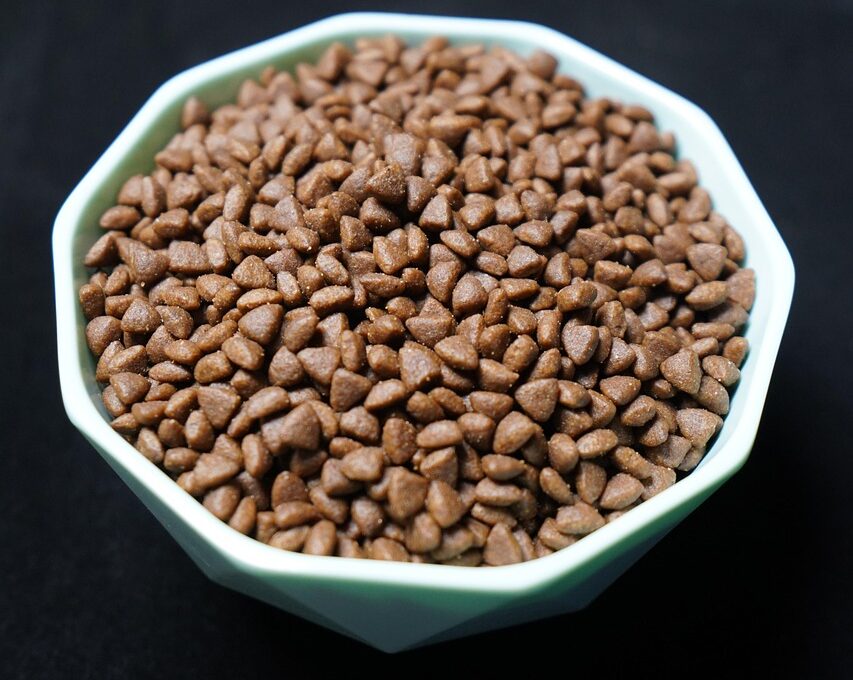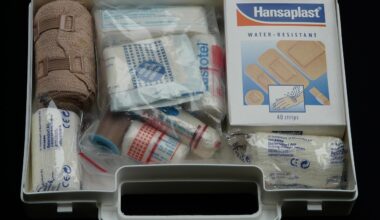Common Additives and Preservatives Causing Allergies in Cats
Many cat owners are unaware of the potential allergens present in their pet’s food. Common additives and preservatives in cat food can lead to allergic reactions in susceptible felines. Ingredients such as artificial colors, flavors, and preservatives might seem harmless, but they can induce various health issues. As a responsible owner, it is crucial to be vigilant about the ingredients used in your cat’s diet. Allergies can manifest in numerous ways, including skin irritations, gastrointestinal disturbances, and even more severe health complications. Understanding common allergens is essential in preventing such reactions. Investigating cat food labels and selecting high-quality alternatives can help mitigate these risks. For example, natural foods with minimal processing are often better tolerated by cats. Consult with your veterinarian to ensure you choose the right diet that meets your cat’s specific needs. Ultimately, being informed about the potential risks associated with common food additives and preservatives is vital for keeping your beloved feline healthy and happy. Know what to look for to achieve optimal nutrition and well-being in your cat’s life.
One of the most prevalent allergens in cat foods is the inclusion of artificial additives such as BHA and BHT. These preservatives prevent spoilage and prolong shelf life, but they might contribute to adverse reactions in some cats. Reactions can include itching, inflammation, and gastrointestinal discomfort. Long-term exposure to these substances can lead to chronic issues that affect your cat’s overall health. Furthermore, natural alternatives like mixed tocopherols are available and are generally considered safer. Nevertheless, always check the labels for these preservatives. Each feline is unique, and responses can vary, making it vital to monitor your cat’s behavior after any changes in their diet. Observing for symptoms after introducing potentially allergenic foods can offer clues on what may be causing allergic reactions. Even minor changes in a cat’s health should prompt a discussion with a veterinarian. Additionally, dietary adjustments should be methodical, avoiding sudden changes that can confuse your pet’s digestive system, leading to more complications.
Another significant category of allergens includes grains. While grains provide energy and nutrition, many cats can develop allergies to common types like wheat, corn, and soy. These ingredients are often used as fillers in cheaper cat food brands, which may trigger reactions in sensitive felines. It’s essential to read the ingredient list carefully, particularly if your cat has shown signs of allergies, such as vomiting, diarrhea, or excessive scratching. Grain-free diets are becoming increasingly popular among cat owners concerned about food allergies. These diets often rely on alternative carbohydrate sources like peas or potatoes, which may be better tolerated. However, switching to a grain-free diet should be approached with caution. Introducing new foods should be done gradually to prevent digestive upset. Along with symptom monitoring, consider keeping a food diary and recording your cat’s reaction to specific ingredients. This strategy can aid in identifying any food-related issues, helping you make informed decisions about your cat’s diet. Engaging with pet nutrition experts can further guide you in selecting appropriate food options.
Proteins as Allergenic Sources
Proteins can also be significant allergenic sources in cat food. Common proteins that cause allergies include chicken, beef, and fish. These protein sources are prevalent in many commercial cat foods, and numerous cats have reported adverse reactions. The symptoms of such allergies can range from skin rashes to more serious conditions that affect overall health. It’s crucial to note that a cat may react to one protein source while tolerating another. Trying novel protein sources like rabbit or venison can provide alternatives for cats with known sensitivities. Consulting your veterinarian about an elimination diet can help determine the specific protein responsible for allergic reactions. Under this diet plan, you would remove suspected allergens from your cat’s food for a period and then reintroduce them one by one. This clear approach can better identify which specific proteins cause issues. Providing a well-balanced diet with less common protein sources can also contribute positively to your cat’s overall health and prevent allergic reactions.
Food dyes and artificial flavors pose another major allergenic risk in cat food. While they enhance the appearance and flavor of food, many cats are sensitive or allergic to them. Reaction symptoms can vary widely from behavioral changes to digestive distress. Many premium brands are moving towards using more natural ingredients and avoiding artificial additives. This shift aims to cater to health-conscious pet owners who prioritize their cat’s well-being. Additionally, opting for brands that emphasize transparency in their ingredient sourcing can provide peace of mind. Look for brands highlighted for their commitment to high-quality ingredients without artificial components. Ingredients like beet pulp or carrot powder may represent healthier alternatives providing color and taste naturally. Furthermore, avoid food containing vague terms like “meat by-products,” as they can include undesirable ingredients. Understanding how to read labels effectively can empower you to make better food choices for your furry friend. Create an informed strategy to choose a diet free from harmful additives and bring your cat happiness and health.
Consulting Your Veterinarian
When addressing food allergies in cats, regular discussions with your veterinarian play an essential role. A veterinarian can perform allergy tests and provide insights into your cat’s specific dietary requirements. If your cat exhibits symptoms suggesting food allergies, it’s crucial to determine whether they are food-related or due to environmental factors. Allergies can be challenging to pinpoint, as many symptoms overlap with other health issues. Early detection and intervention are key components in managing food-related allergies. Your vet can offer guidance on high-quality diets, specialized formulations, or elimination diets tailored for your cat’s needs. Building a strong relationship with your vet ensures you have access to updated information regarding food sensitivities. They can recommend reputable brands that utilize wholesome ingredients and avoid known allergens. Regular health check-ups and dietary evaluations can further support your cat’s nutritional regimen and minimize allergy risks. Ultimately, partnering with a veterinary professional enhances efforts to provide your cat with effective management strategies for better health outcomes.
In summary, understanding common food allergens is key to ensuring your cat’s health. Be aware of artificial additives, preservatives, grains, and protein sources that may induce allergies. Keeping yourself informed can help you navigate the complexities of commercial cat food. Choose higher-quality foods with minimal processing and natural ingredients. Monitoring your cat’s reactions to specific brands and ingredients will guide you in selecting suitable options. If needed, work closely with a veterinarian to develop a holistic dietary plan. Identifying and eliminating allergens can prevent uncomfortable symptoms that affect your cat’s quality of life. With the proper knowledge and proactive measures, you can work towards enriching your cat’s diet while safeguarding their health from allergens. Make dietary choices carefully to ensure your feline friends remain happy, healthy, and free from allergies. These informed choices lead to better outcomes for your beloved pet, encompassing dietary satisfaction and overall well-being. Your commitment to understanding their needs plays a significant role in their long-term health.



